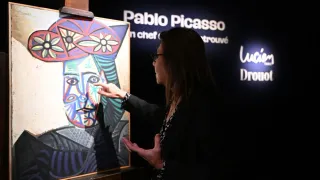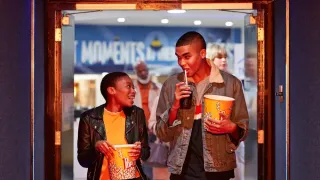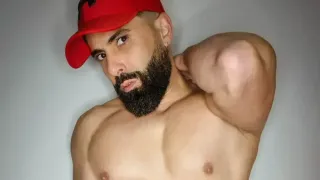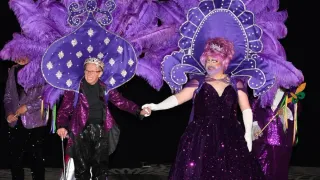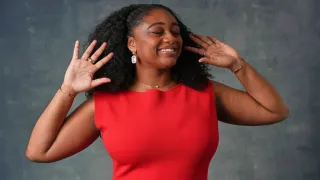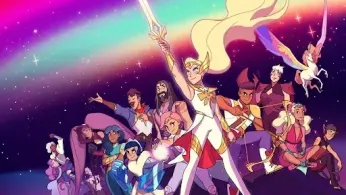
3 hours ago
The Queerest Cartoons You Didn’t Realize Were Gay: From 'She-Ra' to 'Adventure Time', the Animation That Quietly Raised a Generation
READ TIME: 4 MIN.
For decades, cartoons have been dismissed by some as simplistic entertainment for children, but in recent years, animation has emerged as a powerful front in the movement for LGBTQ+ representation. While live-action series have often faced pushback or censorship, animators and writers have found creative ways to encode queerness into their stories—sometimes under the radar, sometimes in bold, unmistakable colors. By doing so, shows like She-Ra and the Princesses of Power and Adventure Time have helped raise a generation of viewers for whom queer identity is visible, normal, and even heroic .
When Netflix rebooted 'She-Ra' in 2018, it did so with a creative team led by Noelle Stevenson, a nonbinary and queer creator determined to push the boundaries of representation. Unlike its 1980s predecessor, the new 'She-Ra and the Princesses of Power' was unapologetically queer from the start . Season after season, the show introduced a wide spectrum of LGBTQ+ characters and relationships:
- Netossa and Spinerella: Canonically in love, these two princesses form one of the show’s most visible sapphic couples, with their relationship treated as normal and loving, not as a spectacle or punchline .
- Bow’s Dads: Season two features an episode devoted to Bow’s two gay fathers, who are depicted as supportive and integral to the narrative, offering younger viewers a positive portrayal of a same-sex family .
- Romantic Tension and Representation: The central dynamic between Adora (She-Ra) and Catra is laden with romantic tension, culminating in one of animation’s most celebrated queer moments: the two confessing their love and sharing a kiss in the series finale .
- Nonbinary and Gender-Fluid Characters: The character Double Trouble introduces nonbinary representation, and the show’s world is notably free from rigid gender norms .
'She-Ra’s approach is neither didactic nor tokenistic; instead, queerness is woven into the world’s fabric. By doing so, it provides viewers—especially queer youth—with a sense of belonging and hope. The impact is tangible: children and teens who see themselves reflected on screen gain confidence and acceptance, while audiences at large are exposed to the diversity of human experience .
'Adventure Time', which aired on Cartoon Network from 2010 to 2018, is another landmark in the history of queer animation. For much of its run, the show’s queerness was subtle, relying on subtext and coded interactions—often necessary due to network constraints and the risk of censorship in international markets .
- Princess Bubblegum and Marceline: Their relationship was initially depicted with ambiguity—close friendship, shared history, and moments of emotional intimacy. Fans speculated about a deeper connection for years, and the creators dropped hints while steering clear of explicit confirmation .
- Finale Revelation: In the series finale, Adventure Time made history by showing Bubblegum and Marceline sharing a kiss, confirming their romantic relationship. This moment was lauded as a breakthrough for LGBTQ+ visibility in children’s media .
- Cultural Impact: By normalizing queer love in a beloved, mainstream cartoon, 'Adventure Time' played a crucial role in shifting industry standards and viewer expectations .
The journey toward overt LGBTQ+ representation in animation has been fraught with challenges. Even as late as the early 2010s, creators like Rebecca Sugar ('Steven Universe') and Noelle Stevenson ('She-Ra') faced resistance from networks wary of backlash or international censorship . Often, queer themes had to be coded—hinted at through subtext, color palettes, or ambiguous dialogue.
- 'Steven Universe': This Cartoon Network series was groundbreaking in its depiction of queer relationships, including the first lesbian wedding in a children’s cartoon (Ruby and Sapphire) and gender-nonconforming characters .
- Changing Industry Norms: The overwhelming positive response from fans and critics alike has emboldened studios to allow more explicit LGBTQ+ content in new shows, from 'The Owl House' (Disney) to 'Harley Quinn' (HBO Max) .
This evolution reflects broader cultural shifts. In 2010, only seven countries recognized same-sex marriage; by 2019, that number had risen to 29, and GLAAD reported nearly 500 LGBTQ+ characters on television—up from under 100 a decade earlier . Animation has not just kept pace with these changes; it has often led the way, using fantasy worlds to imagine new possibilities for family, love, and identity.
For many LGBTQ+ people, childhood was a time when queer identities were absent from the media landscape—if not outright stigmatized. Today, cartoons like 'She-Ra', 'Adventure Time', and 'Steven Universe' offer something radically different: affirmation .
- Normalizing Queerness: By depicting LGBTQ+ characters and relationships as ordinary, animation helps reduce stigma and combat prejudice. When children see queer families, friendships, and romances, they learn that these identities are valid and valuable .
- Empowering LGBTQ+ Youth: For young viewers questioning their identities or facing discrimination, seeing themselves reflected on screen can be life-changing. It sends the message: you are not alone, and you deserve happiness .
- Broadening Horizons: Even for viewers who aren’t LGBTQ+, these cartoons encourage empathy, understanding, and a more inclusive worldview.
The legacy of queer animation is still unfolding. Shows like 'She-Ra' and 'Adventure Time' have not only delighted fans—they have quietly, persistently changed what is possible in children’s media. With every openly queer character, relationship, or storyline, these cartoons challenge old boundaries and model a world where everyone can be a hero. As new series continue to expand the landscape of representation, the generation raised on these stories is likely to inherit a media culture—and perhaps a world—that is more inclusive, more imaginative, and more free.
